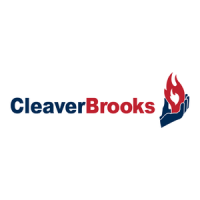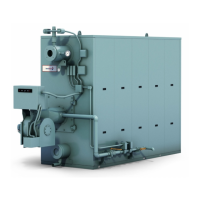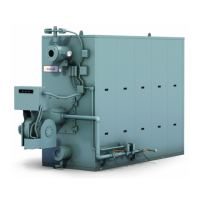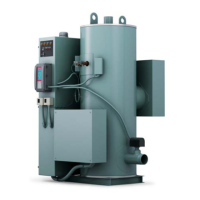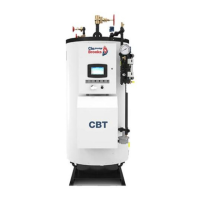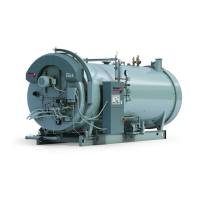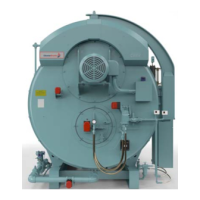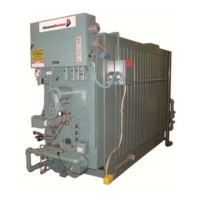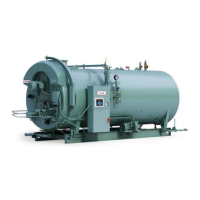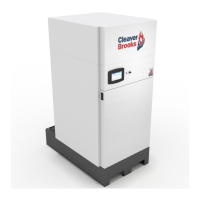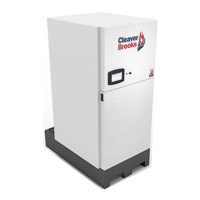750-177 3-1
CHAPTER 3
Pressure Vessel Care
A. GENERAL
This chapter is devoted primarily to the waterside care of the
pressure vessel.
Proper water supply and treatment are essential to boiler life
and length of service. Proper water treatment will pay
dividends in the form of longer life, less downtime, and
prevention of costly repairs.
Hot water boilers require proper circulation. The system must
be operated as intended by its designer in order to avoid the
possibility of thermal shock with severe stress to the pressure
vessel.
Although it is of prime importance, the subject of water
supply and treatment cannot adequately be covered in this
manual. For specific information or assistance with your
water treatment requirements, contact your local Cleaver-
Brooks authorized representative.
B. WATER REQUIREMENTS
(HOT WATER BOILERS)
Air Removal
The hot water outlet (Figure 3-1) is located in the top drum of
the boiler. This location reduces the possibility of released air
(which is trapped at the top of the drum) from entering the
system. Any air (or oxygen) that may be released in the boiler
will collect at the top of the upper drum, where it will escape
through the air vent tapping (Figure 3-1). The tapping must be
properly piped to the expansion tank or a stand pipe and air
bleeder to remove gases that collect at the top of the drum.
Continuous Flow
The system must be piped and the controls arranged so that
there will be water circulation through the boiler under all
operating conditions. Constant circulation through the boiler
eliminates the possibility of stratification within the unit.
Refer to Fig. 3-1 to determine the minimum continuous flow
rate through the boiler under all operating conditions.
A. HOT WATER OUTLET
B. AIR BLEED TAPPING
C. PRESSURE/TEMPERATURE GAUGES
Figure 3-1: Upper Drum (Hot Water)
B
A
C
A. General. . . . . . . . . . . . . . . . . . . . . . . . . . . . . . . . . . .3-1
B. Water Requirements (Hot Water Boilers) . . . . . . . .3-1
C. Water Requirements (Steam Boilers . . . . . . . . . . . .3-3
D. Water Treatment . . . . . . . . . . . . . . . . . . . . . . . . . . .3-4
E. Blowdown . . . . . . . . . . . . . . . . . . . . . . . . . . . . . . . .3-4
F. Cleaning . . . . . . . . . . . . . . . . . . . . . . . . . . . . . . . . . .3-6
G. Boilout . . . . . . . . . . . . . . . . . . . . . . . . . . . . . . . . . . .3-6
H. Washing Out . . . . . . . . . . . . . . . . . . . . . . . . . . . . . .3-8
I. Periodic Inspections . . . . . . . . . . . . . . . . . . . . . . . . .3-8
J. Preparation for Extended Layup . . . . . . . . . . . . . . . .3-9
C
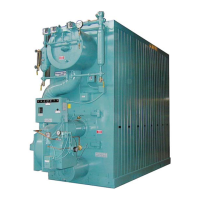
